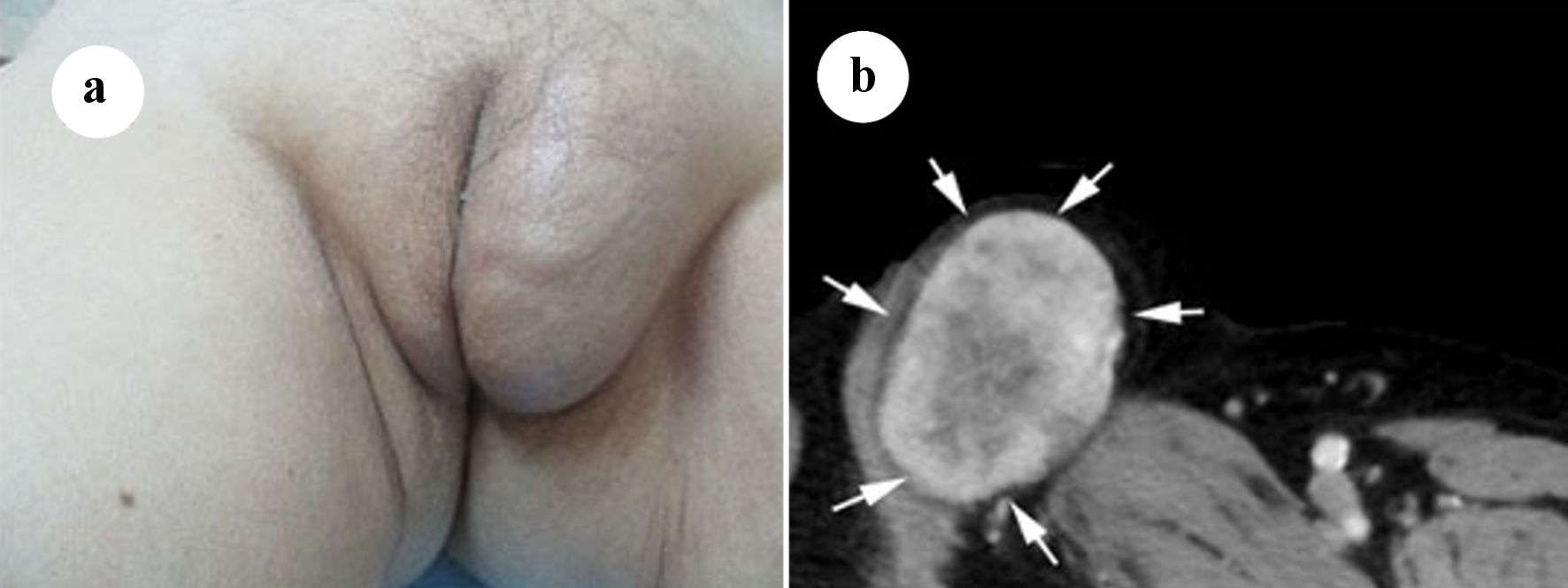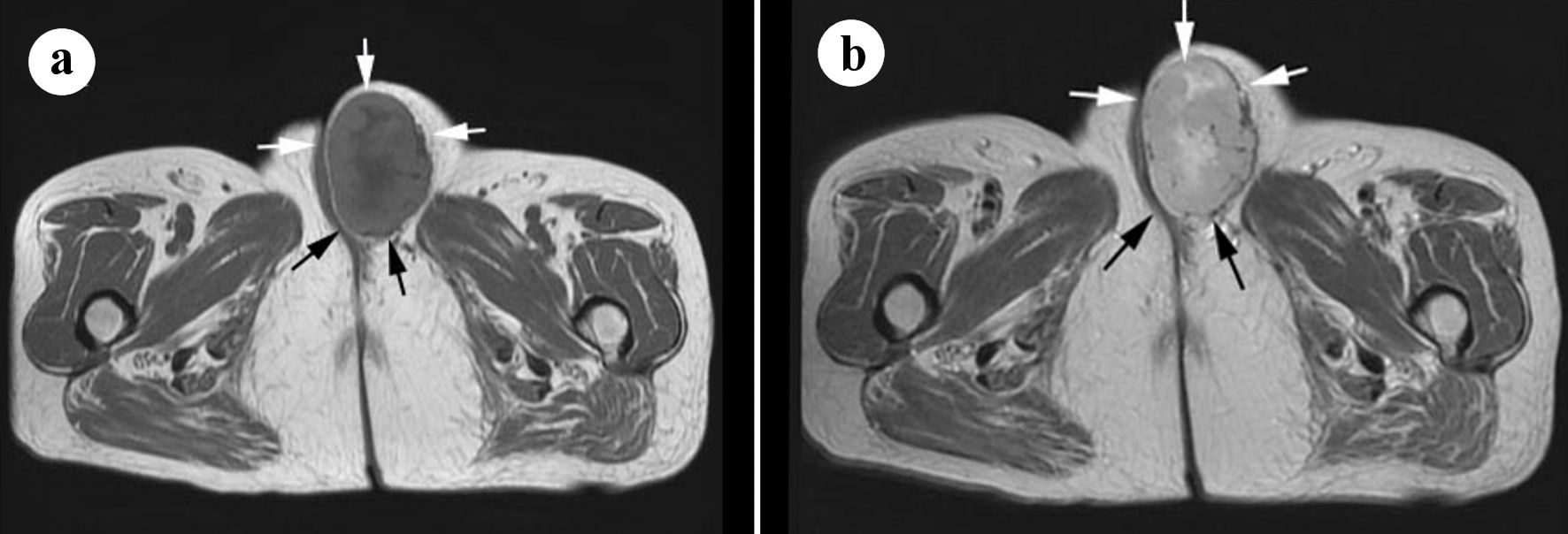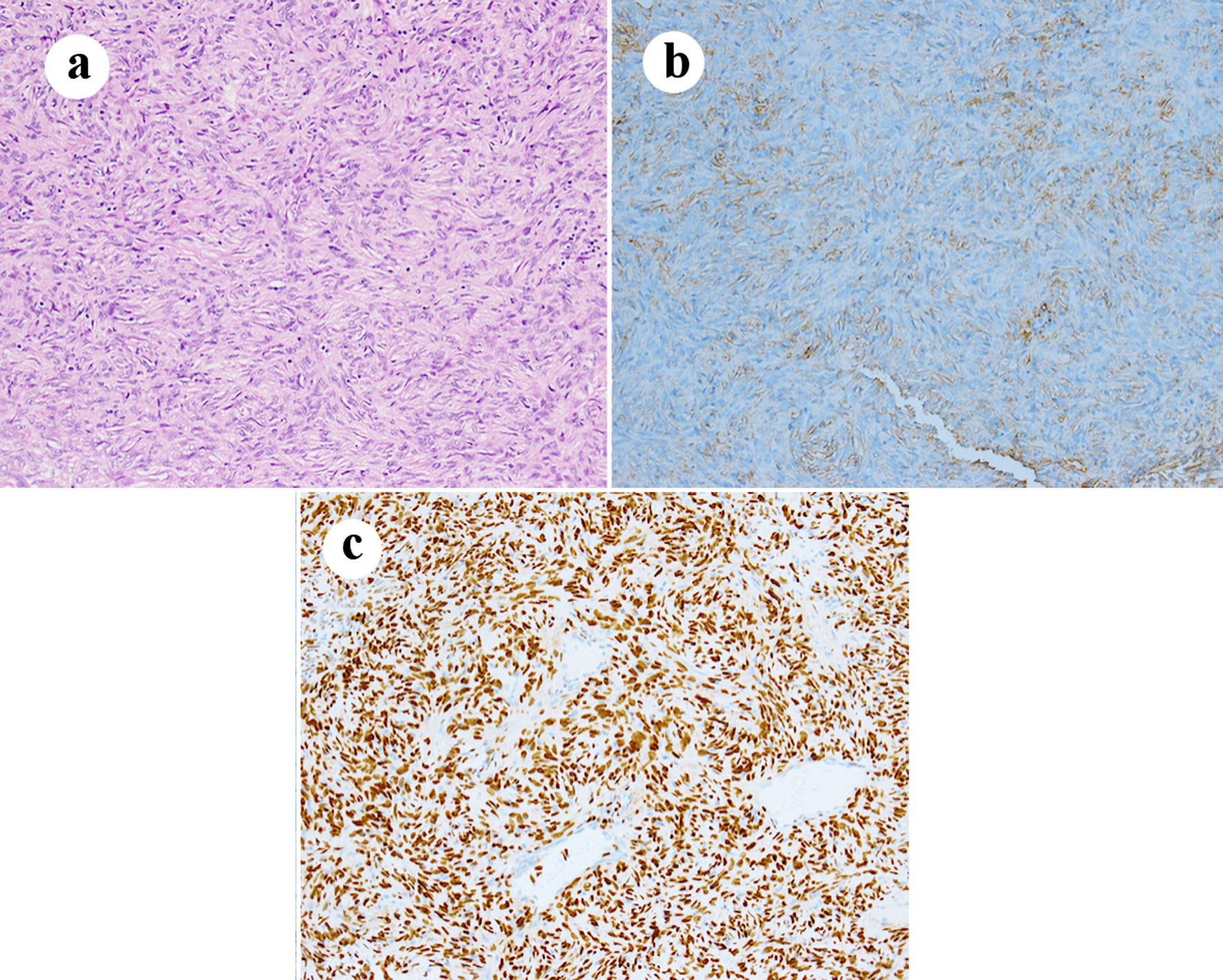
Figure 1. (a) Soft tissue mass on the left labia majora. (b) Axial computed tomography (CT) scan with intravenous contrast showing a mass in the left labia majora with intermediate density and enhancement (arrows).
| Journal of Clinical Gynecology and Obstetrics, ISSN 1927-1271 print, 1927-128X online, Open Access |
| Article copyright, the authors; Journal compilation copyright, J Clin Gynecol Obstet and Elmer Press Inc |
| Journal website https://www.jcgo.org |
Case Report
Volume 12, Number 1, March 2023, pages 19-23
Solitary Fibrous Tumor in the Vulva
Figures


